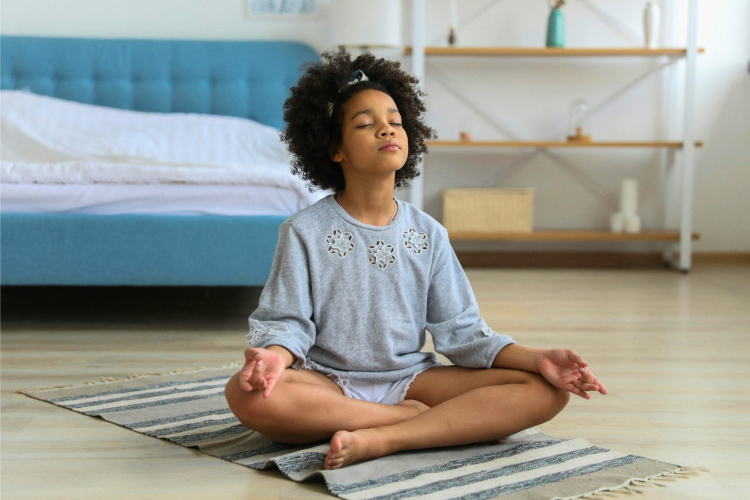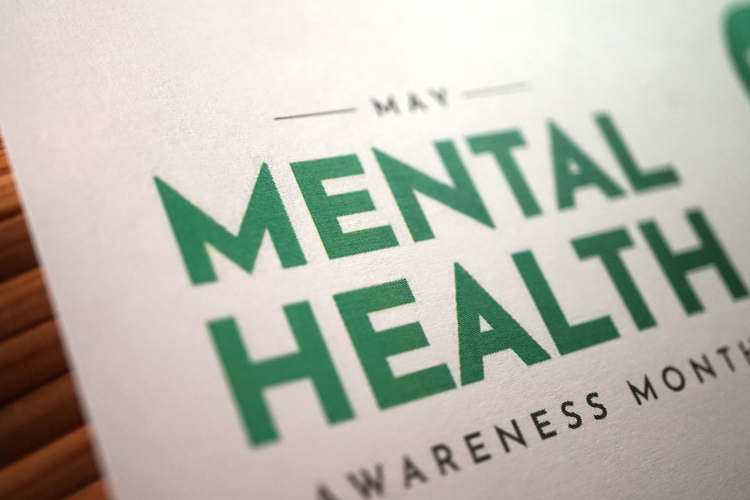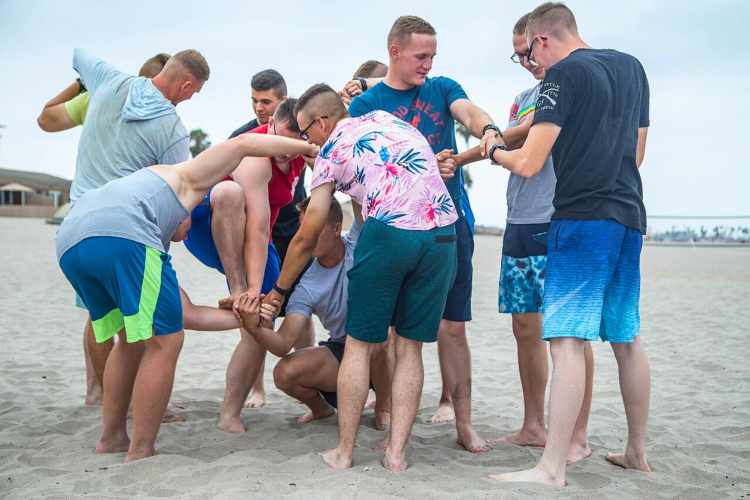31 Mindful Mental Health Activities for an Energetic 2025

Mental health is a daily struggle for many and having access to the right mental health activities can mean the difference between spiralling and having a peaceful, productive day. Mental health tools can help calm the mind, promote relaxation and even improve emotional regulation, which is a vital skill for both kids and adults.
Mindfulness activities like coloring, breathwork, keeping a gratitude journal and even spending time in nature can really transform the way you approach challenging feelings and situations but they don’t always work for everyone. That’s why we’ve compiled a collection of mindful mental health activities for kids, teens, students and adults, so you can find the techniques that resonate most with you and help you with your reset day.
Jump to Section
- Mental Health Activities For Kids
- Mental Health Activities For Teens
- Mental Health Activities For Students
- Mental Health Activities For Adults
- Mental Health Activities For Work
- Mental Health Activities FAQs
Mental Health Activities For Kids
Raising kids is more challenging than ever, with social media, video games and the internet all adding a level of complexity that simply didn't exist for previous generations. Plus, there’s a natural increase in mental pressure that comes with growing up in today’s world that can really cause anxiety in kids. Parents and teachers can support children's well-being with these creative mental health activities, designed to help them cope and thrive, whether independently or in collaboration with others.
1. Emotional Rainbows

One simple and fun way to support mental health in children is by helping them express their emotions through color. Sometimes, young children struggle to find the right words to express their feelings, and drawing can provide an alternative way for them to communicate. This activity builds self-awareness, encourages creativity, and can help individuals understand and discuss their emotions using something they love: color!
To try this, start by drawing a large rainbow on a sheet of paper. Then, assign an emotion to each color. For example, red can mean anger, blue can mean sadness and green can mean happiness. Give the child crayons or markers and ask them to color in the rainbow using the colors that match how they feel inside.
2. Gratitude Jar
The CDC has stated that some of the most diagnosed mental health disorders in children are anxiety and depression, and the ClinMed International Library states that gratitude has been shown to help with both. One of the best ways to help children harness the power of gratitude is with gratitude jars.
Each day, they take a moment to write down something they're thankful for on a small piece of paper. It could be something big, like a kind gesture from a friend or something small, like your favorite cookie. Fold the note and place it in a decorated jar to make it feel special. Over time, the jar will fill with little reminders of joy and kindness. And on days when they're feeling low or need a pick-me-up, they can open the jar and read their notes to lift their spirits and remember the positive moments.
3. The 54321 Method
The 54321 method is a simple grounding exercise that helps them stay in the moment and avoid negative thinking and worry. They can do this exercise anywhere, at home, at school or even in the middle of a crowd. They can do it standing, sitting or lying down. Your kid starts by taking a deep breath in through their nose and out through their mouth. Then, they must slowly take in their surroundings using their five senses.
Find five things that you can see around you, like a colorful poster on the wall or a cat curled up on a chair. Then, list four things that you can touch, followed by three things you can hear, then try to find two things that you can smell. Finally, check in with yourself and name one emotion you’re feeling. This practice can help you feel more grounded, more in control and more connected to the present moment.
4. Thought Bubbles

Thinking is one of the amazing things that makes us human, and every day, our brains have thousands of thoughts. These thoughts can be ideas, memories, things we’ve learned or opinions. But sometimes, all these thoughts can pile up and make us feel overwhelmed, worried, tired or even upset. To help with this, we can imagine each thought as a bubble. These thought bubbles pop into our heads, float around for a little while and then usually disappear. However, some thought bubbles don’t go away so easily. They grow bigger and stay in our minds, especially when they’re about something we’re unsure of or worried about.
The thought bubble mindfulness activity is designed to help us gently release these big, heavy thoughts. Essentially, this technique teaches children to recognize when a thought bubble appears in their mind. When it does, they can take a slow, deep breath to imagine blowing the bubble away. When taking this breath, the belly should rise and fall gently, and ensure the shoulders are relaxed and still. This calming exercise can be used anytime a child feels overwhelmed by too many thoughts, and it often helps them feel more peaceful and in control.
5. Feelings Charades
Feelings Charades is a game that can help kids explore and express their emotions in a playful and non-verbal way. It’s a great way to build emotional awareness, communication skills, and empathy, all while having fun and staying active. To get started, simply write different emotions like happy, sad, excited or scared on slips of paper. Then, take turns picking a slip and acting out the emotion without speaking. The other players try to guess what the emotion is. After each turn, take a moment to talk about a time when they’ve felt that way. This adds a layer of reflection that helps kids connect with their own feelings and understand others better.
6. Nature Scavenger Hunt

An article in Nature tells us that regularly spending time in Mother Nature can significantly lower mental distress and improve overall well-being. That’s why it’s so important to get kids out in nature, exploring and discovering the world around them. One fun activity to try is an outdoor scavenger hunt. Simply pack a healthy snack and head to your local park, where you can make a short list of natural items to look for, like a colorful leaf, a smooth rock or the sound of a chirping bird. This playful activity not only encourages kids to be present in the moment, but also makes it easier for them to slow down, notice their surroundings and feel more connected to nature.
7. Make Art
According to a study by art therapy professors at Drexel University, creating art — even for just 45 minutes — can be a gift for stress relief. They can help lower anxiety levels, regardless of your kid's artistic skill or experience. That means anyone can benefit from it, including children. So why not sign up for family-friendly art classes in Atlanta or Chicago? During the session, you and your little ones can create colorful mini-posters with uplifting quotes about mental health. Kids can hang them up in their rooms as daily reminders that it’s okay to struggle sometimes, and that healing and thriving are always possible.
Mental Health Activities For Teens
Teens nowadays have a multitude of challenges to contend with, so they need healthy coping strategies and outlets to prevent being overwhelmed. Below are a few simple mental health activities for teens that’ll help them build grit and emotional resilience. This includes mental health activities for high school students that help manage anxiety and stress, as well as activities that can be done individually or in groups.
8. Body Scanning

Body scanning is a mindfulness exercise that is incredibly relaxing, and it can help with stress and focus, especially during exams. The key to this exercise is to relax and allow your mind to acknowledge the physical sensations of your body and the thoughts that come to mind. You start by finding a quiet place to lie down with your legs stretched out. Then, bring your attention to your breathing. Notice how the air enters through your nose, moves down into your lungs and expands your chest. Feel the breath leave your body as you exhale.
You may notice noises around you or thoughts entering your mind. Acknowledge each one separately before moving on to the next. Think of a leaf floating on a stream. Place each thought on a leaf and watch it go away. Then, scan your body, starting with your head and working your way down to your toes, paying attention to how every muscle feels and relaxing it along the way. The goal of a body scan is to focus your attention on the present moment by tuning into your body and mind without judgment.
9. Mindful Coloring
This is a simple but powerful activity that helps bring your attention to the present moment by focusing on the colors, patterns and movements of your hand. All you need is a coloring book that appeals to your interests, whether that’s mandalas or nature scenes. Then, choose your favorite pencils, markers or crayons and find a quiet and comfortable spot where you won’t be disturbed.
As you color, mindfully focus on each stroke you make and the shades you’re choosing. There’s no need to worry about staying inside the lines or making it perfect. Simply let your mind wander and enjoy the process of reconnecting with yourself.
10. Emotional Journaling

Journaling is one of the best mental health activities for teens who are grappling with big emotions. That’s because keeping an emotional journal gives them a safe, personal space to express their feelings, thoughts and experiences without fear of judgment. Start by giving them a dedicated notebook where they can write freely. Then, encourage them to make regular entries; perhaps before bedtime or after they’ve had a tough day.
Let them know that there’s no right or wrong way to write in their journal; it’s all about being honest with themselves. Over time, you can sit down together to gently review some of their entries. This opens the door to understanding their emotions better and talking about healthy ways to cope with difficult feelings.
11. Mindfulness Meditation
Mindfulness meditation involves sitting quietly for a few minutes each day, focusing on the breath and gently acknowledging any thoughts that arise. This practice focuses on bringing your attention to the present moment, which can help reduce feelings of anxiety and overwhelm. The more often your teen practices mindfulness meditation, the better they’ll be at managing stress from school and social pressures. Over time, practicing mindful meditation can help them feel calmer, more aware of their emotions and more in control of how they respond to life’s challenges.
12. Music Therapy
Most teens love music, so what better way to help their mental health than with music therapy? This is another mindfulness exercise that’s designed to help teens feel their feelings and it can involve playing an instrument, writing lyrics or listening to a calming playlist. The goal is to use the music as a medium for self-expression and emotional healing.
13. Guided Imagery

This relaxation trick can be likened to hitting pause on your brain, and for teens, it can be beneficial during moments of overwhelm. All they need to do is imagine peaceful scenarios, such as walking through a quiet forest, floating in a calm ocean, or even just cozying up in their dream bedroom. They can ask a trusted adult to guide them through it or listen to a calming audio to shift their focus away from anxiety and into a more chill headspace.
14. Positive Affirmations
One of the easiest ways for teens to start taking care of their mental health is by talking to themselves a little nicer. Positive affirmations are short, feel-good phrases they repeat to themselves, like “I am enough” or “I can handle this.” It might sound cheesy at first, but saying these statements regularly can help counteract some of that negative self-talk and build genuine confidence over time. For teens dealing with self-doubt or a swirl of negative thoughts, affirmations can remind them of their capabilities and serve as the foundation for a positive mindset shift.
Try Louise Hay's daily affirmations for some guidance. Even musician Snoop Dogg is rapping about affirmations these days.
Mental Health Activities For Students
If you're a student dealing with stress, anxiety or just feeling overwhelmed by school life, you're definitely not alone. Here are some mental health activities for students that’ll help you feel better, think clearly and help you to actually enjoy your time at school.
15. Try Brain Breaks

Brain breaks are a quick way to help kids stay mentally healthy throughout the day. They can do a quick guided meditation, take a few deep breaths or even do a couple of minutes of stretching or yoga. You can suggest brain breaks when kids start feeling stressed out by school, family stuff or just life in general. In class, these tiny timeouts can help them reset and get back to their day with a clearer, calmer mind.
16. Set Goals
Whether it’s something big, like finishing a course, or small, like making your bed every morning, having a goal gives your day structure and purpose. It’s a great way to give your brain a sense of direction so that things don’t feel so out of control. Plus, ticking something off your list feels incredibly satisfying — that’s why to-do lists are so popular and effective.
17. Set Up a Virtual Book Club
Starting a virtual book club is one of the most surprising mental health activities for students. It’s excellent for the bookworms in class, and it’s relatively easy to set up. You can start by selecting a book that focuses on mental health to help everyone learn more about how to take care of themselves. Then, set up a chill monthly or bi-weekly meeting where students can discuss what resonated, share tips, or just vent a little.
18. Group Discussion

For teens, school mental health talks can feel like just another lecture, whereas group coaching can turn mental wellness into a team effort. Instead of sitting silently through a slideshow, students get to share what’s going on in their lives, hear from others who get it and walk away with useful strategies that stick.
When students open up in a safe group setting, they realize they’re not alone. That shared space builds trust, sparks meaningful conversations and makes mental health tools feel less abstract and more like something you can use in real life. Group activities keep everyone involved, and it’s way more engaging than just reading about stress management in a textbook.
19. Take a Digital Detox
Teens are practically glued to their screens and all that scrolling and constant pinging from notifications can seriously compromise their mental health. That’s where a “Digital Detox Day” comes in. Set aside a few hours where students can go tech-free and just be. Or, you can take it a step further and have students journal about the experience.
What did it feel like not to be constantly connected? Did they notice a change in their mood? Did it make them think differently about how much time they spend online? Whatever the feedback, it's a great way to build awareness around how tech impacts mental wellness.
20. Set Up a Mental Health Week

Mental Health Awareness Month is great, but why stop there? Imagine setting aside an entire week during the school year just to focus on mental health. You can pick a theme, like kindness or connection, and build out a bunch of fun, meaningful mental health activities around it. Organize a mini resource fair, relaxing workshops and plan creative art projects that help students express their feelings.
The goal with this is to make mental health feel like something we all care about, because we should. And when you make space for these conversations regularly, it makes mental health a part of school culture.
Mental Health Activities For Adults
Wondering which activity helps improve mental health? Whether you're dealing with work pressure, relationship drama or just the general chaos of adult life, there are tons of simple mental health activities for adults that can help you feel more balanced and happy. Here are a few to get you started.
21. The Human Knot

The human knot is a great reminder that untangling a mess (literal or emotional) is easier when we do it together. To start, everyone stands in a circle, crosses their arms over each other, and reaches across to hold hands with two different people. Without letting go, the group must work together to untangle the knot they’ve created.
This light physical activity naturally encourages movement, but more importantly, it builds trust, making it one of the best mental health activities for adults, especially if your team is dealing with workplace stress or relationship challenges.
22. Pant and Sip Classes
Paint and sip classes are a surprisingly great way to support your mental health and you don’t need to be an artist to enjoy them. These classes are more about the process than the final product, making them a great way to relieve stress, quiet the mind and express your emotions through color and shape. You can find paint and sip classes in Miami, Baltimore, Detroit and Scottsdale, to name but a few.
23. Photography Classes
Ever notice how taking photos makes you slow down and really look at the world around you? Photography classes can do wonders for your mental health and provide an opportunity to focus on beauty and the everyday moments that make life worth living. It really is one of the most grounding mental health activities for adults and teens alike. Additionally, learning a new skill can help boost your confidence and take your mind off your worries. You can take photography classes in Phoenix, Dallas or your city.
24. Writing Therapy

Writing is one of the most underrated self-care ideas and it can work wonders for your mental health. One popular method is journaling with prompts, which are specific questions or themes that gently guide you in exploring your thoughts and emotions. You could write about a recent experience, a recurring feeling or something you're hoping for. The idea is that putting things down on paper can help you process them more clearly.
For those comfortable sharing, reading journal entries aloud in a group setting or even an open mic night can create a space for connection, empathy and mutual support. Another creative option is group story writing. In this activity, each person adds a line or paragraph to a shared story, building on what came before. As the story unfolds, so do opportunities to explore deeper emotions or shared themes.
25. Try Mental Health Bingo
Similar to Icebreaker Bingo, the idea behind Mental Health Bingo is that you make a bingo card filled with simple, feel-good activities like “stretch for 10 minutes,” “go for a short walk” or “jot down three things you’re grateful for.” The goal is to weave mental wellness into your everyday routine without it feeling like another item on the to-do list. As you tick off each square, you can share your wins with an accountability partner or support group. It’s a surprisingly effective way of building healthy habits that stick.
26. The Five-Finger Technique
A certain amount of stress is normal and even necessary, but too much can take a toll on your life and health. With this unique mental health activity, you can alleviate stress in just about five minutes. Basically, you hold each finger for one to two minutes until you feel a pulsating sensation, which is believed to help relieve stress and negative emotions and each finger of your hand represents a different feeling or attitude. For instance, the thumb can help you combat emotions like anxiety and worry, while the index finger can help you control fear and the pinky can increase optimism.
A cute mental health yoga activity that is made for kids but works wonders on adults is to tap your thumb to each finger and say "Peace, begins, with, me" — four words and four taps, as you tap a different finger on each word with your thumb. Repeat the phrase until you're calm.
Mental Health Activities For Work
Between endless meetings, tight deadlines and constant email notifications, work can be really stressful. Luckily, creating a mentally healthy workplace doesn't have to be complicated or expensive. Sometimes, all it takes is a few simple mental health activities for work to help your team decompress, connect and remember why they enjoy working together.
27. Cooking Classes
/cooking_classes/Cooking_class_having_fun.png)
Cooking classes at work might sound like just a fun break from the usual routine but they’re actually a great way to support mental health, too. All that chopping, stirring, and tasting can be incredibly grounding, especially when you're focused on the present moment. Cooking together as a team gives coworkers a chance to bond outside of work tasks. You can find cooking classes in Miami, Detroit and loads of other cities.
28. Candle Making
Looking for a fun and relaxing way to boost mental wellness at work? Candle making is a perfect mindful activity that lets your team get creative while unwinding together. In a group candle-making session, everyone learns handy skills like mixing scents, pouring wax and decorating jars while experiencing a sense of calm and accomplishment. Plus, those beautiful candles make thoughtful self-care gifts you can share with friends or keep for yourself as a reminder to slow down and breathe. You can book candle making classes in Austin and Boston for your team.
29. Blindfolded Obstacle Course
During a blindfolded obstacle course, one person is blindfolded while their partner gives directions through a mini obstacle course. Not only is this one of the most fun mental health activities for work, but it’s also a powerful way to build trust, sharpen communication skills and get everyone laughing. Teams often discover that clear, specific instructions are more effective than vague directions, making this activity a practical lesson in workplace communication that participants can apply to their daily interactions.
30. Dance Therapy

Dance therapy is your body’s chance to say what words can’t. That’s because in dance therapy, movement becomes a tool to release emotions, build self-awareness and just let loose. Whether you’re feeling joyful, stressed or somewhere in between, moving your body through dance can be incredibly freeing.
31. Host a Mental Health Workshop
We all deal with stress, so why not create a space where people can learn practical ways to manage it? Bringing in a licensed therapist or mental health expert for a relaxed, informative session is a great way to show your team you care about their mental well-being. They’ll walk away with tools for self-care, coping strategies and maybe even a better understanding of themselves. It’s also the perfect employee engagement idea and employee appreciation gift to remind everyone about their perks at work, like mental health support resources your company offers, such as your Employee Assistance Program or wellness benefits. Its sets the standard for your work culture, showing the team that it is not a toxic work culture.
Mental Health Activities FAQs
What Are The 5 C's Of Mental Health?

The 5 C's of mental health are Connection, Compassion, Coping, Confidence and Control. To apply them, start by staying connected to people who make you feel seen and supported. Be kind to yourself and learn healthy ways to cope with stress. Build your confidence by recognizing your strengths and taking back control by making choices that support your well-being, like setting boundaries or sticking to a routine.
What Activities Can You Do On A Mental Health Day?
What activities can you do on a Mental Health Day? Well, it all depends on what you need in that moment. You can go for a walk, roll out a yoga mat or lose yourself in a good book or playlist. The point is to slow down, breathe and give yourself a break from the pressure.
From mental health activities for high school students to empowering tools for kids and unique team-building activities for the workplace, we’ve covered a wide range of strategies to support mental wellness across different age groups. So, the next time you’re wondering what some activities are for your mental health, you’ll know exactly where to start. In addition to eating foods that boost the immune system and drinking loads of water, having a toolbox of mental health tools to help you cope with life’s challenges can make all the difference in how you navigate stress and setbacks.
For more fun ideas to generate meaning and joy, check out other experiences happening on Classpop!

